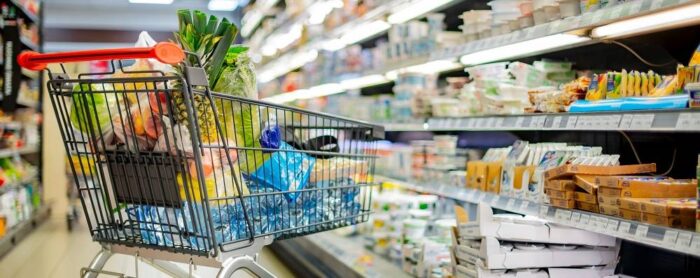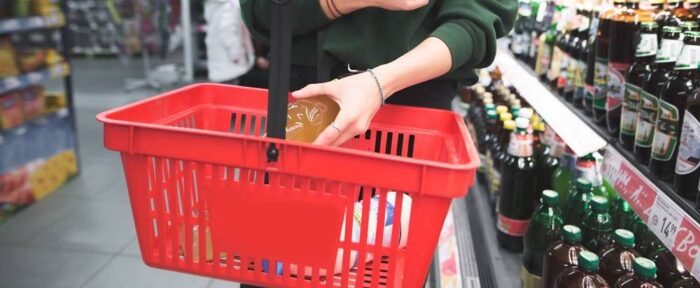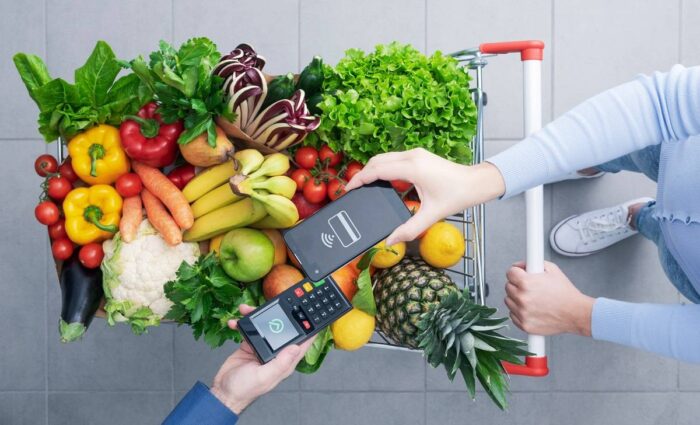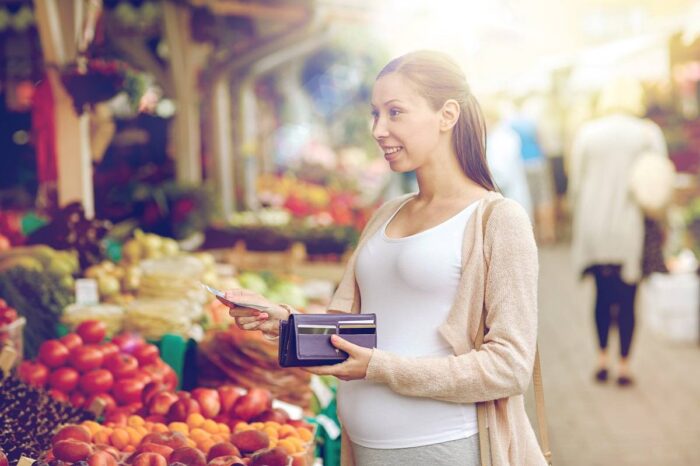A family of four in 2023 must have a gross monthly income at or below $3,007 to qualify for SNAP benefits.[1]
States issued a mean of $3.2 billion in monthly cash benefits, equivalent to 1.1 billion meals, through P-EBT from March to June 2020.[2]
The COVID-19 pandemic led to a surge in food insecurity, pushing SNAP participation to over 42 million in 2022.[3]
SNAP, an advanced form of the Food Stamps program, uses EBT cards for convenient transactions at various outlets. Each state offers different SNAP benefits, with the average being around $121 per individual. While EBT facilitates diverse purchases, it notably excludes alcoholic beverages and medical expenses.
Given the current SNAP rules, EBT does not cover medical costs. Read more about your options and getting financial assistance to pay off medical bills from our resources at Gov Relations.
SNAP Program's Rise During COVID-19
The COVID-19 pandemic led to a surge in food insecurity, pushing SNAP participation to over 42 million in 2022.[3] This increase underscores the program's critical role in aiding American families.
EBT Cash Benefits: Adaptations During and Post-COVID-19
The COVID-19 pandemic brought unprecedented challenges, leading to significant enhancements in EBT cash benefits. Recognizing the increased financial strain on families, the government expanded EBT benefits to provide emergency support. This included increased benefit amounts and extended eligibility to ensure that those affected by job losses or reduced income could access essential resources.
Fast Facts
In April 2023, 41.9 million people in 22.2 million households received SNAP benefits in the U.S.[1]
State-Specific Responses to COVID-19
Different states implemented unique measures to support their residents during the pandemic. For example, some states offered additional EBT cash benefits to families with school-aged children who missed free or reduced-price meals due to school closures. In a significant move, states issued a mean of $3.2 billion in monthly cash benefits, equivalent to 1.1 billion meals, through the Pandemic Electronic Benefit Transfer (P-EBT) from March to June 2020.[2]
This initiative was crucial in addressing the increased cost of living and ensuring food security for many families during the pandemic. Additionally, other states temporarily increased the benefit amounts to further assist those impacted by the economic downturn.
Transitioning to Post-Pandemic Support
As the situation evolved, so did the EBT cash benefits. Post-COVID, while some emergency measures were phased out, others led to permanent changes in the program. These changes aimed to provide a more robust safety net, reflecting the lessons learned during the pandemic.
For instance, some states have continued offering expanded benefits or have made it easier to apply for and renew EBT benefits. Notably, in 2023, eligibility criteria were adjusted to accommodate more families; for example, a family of four must have a gross monthly income at or below $3,007 to qualify for SNAP benefits.[1] This adjustment ensures that a broader range of families can access the support they need.
Staying Informed on Current Benefits
Beneficiaries and retailers alike must stay informed about the current state of EBT cash benefits. State-specific websites and hotlines are valuable resources for the latest information on EBT program changes and ongoing support measures.
Things You Can And Cannot Buy With EBT
So, what can you buy with EBT cash benefits? The government restricts everything you can and cannot buy with your EBT cash benefits. You can purchase at many places with authorized retailers and grocery stores participating in SNAP to offer discounted food, fruits, and vegetables to SNAP beneficiaries.
Things You Can Buy With EBT

The following is the list of things you can buy using your EBT card.
- Food Items: Food items that are used in the preparation of a meal at home are included under this category. These include fruits, vegetables, meat, chicken, fish, milk, yogurt, eggs, cereals, and bread.
- Cakes And Gift Baskets: You are entitled to celebrate and enjoy your special days with a cake even if you rely on government assistance due to your financial situation. You must ensure that the decorations are not worth more than half the value of the cake. Gift baskets can also contain food items if they account for more than 50% of the total price.
- Plants And Seeds: SNAP beneficiaries can buy plants and seeds to start a garden with their EBT cash benefits to become self-sufficient in green foods. However this specific application of EBT benefits is limited to growing plants, not raising animals.
- Some Energy Drinks: Some energy drinks are allowed to be purchased through EBT's cash benefits. Energy drinks must include nutrition facts labels to cut. Otherwise, they don't qualify as food items. Energy drinks that come with supplement information are categorized as vitamins and medicines, so SNAP does not cover them.
- Snacks: Although the main objective of SNAP is to provide healthy food for a low-income individual or household, you can buy snacks with your EBT cash benefits that may be considered junk food. These include chips, candy, snack crackers, ice cream, and soft drinks.
- Food Enhancements: All items that enhance food taste or help prepare food fall under this category. Food enhancements include spices, ketchup, sauces, sweeteners, and edible oil.
Things You Can't Buy With EBT

The following are the goods you cannot buy using your EBT card.
- Alcohol: When it comes to alcohol-based products such as wine, beer, or liquor, you must pay for them yourself. Even if these products having alcohol content are being sold at a SNAP participating retailer, SNAP beneficiaries cannot pay for them using their EBT cash benefits.
- Cigarettes/Tobacco Products: You cannot purchase cigarettes, chewing tobacco, cigars, and other products that contain tobacco. This prohibition extends to electronic cigarettes, pipes, vapes, e-liquids, vape cartridges, vape mods, vape juices, and refills. People who violate this rule may face immediate and permanent suspension of their EBT benefits.
- Non-Food Items: Food items can only be purchased with EBT cash benefits if used to prepare a meal. That means you cannot purchase any non-food items sold at a participating grocery store, such as cleaning liquids, diapers, toothpaste, baby wipes, household supplies, paper towels, soap, shampoo, cosmetics, and detergent. You cannot use EBT cash benefits to pay for rent or utilities, gas, clothing, lottery tickets, transportation costs, or have your laundry done. You can, however, use TANF benefits for these expenses.
- Pharmacy Items: SNAP does not cover pharmacy items, including multivitamins, over-the-counter over-the-counter or prescription medicines, or supplements. Some of these items may be covered under the umbrella of Medicare or Medicaid.
- Hot Food: Food that is freshly prepared or hot and anything meant for immediate consumption does not qualify as products you can purchase using your EBT benefits. This includes hot beverages such as tea and coffee. Canned beverages and packaged foods that are not freshly prepared or cooked are eligible for purchase using EBT cash assistance. The food needs to be prepared earlier and packaged before the purchase.
- Pet Food: If you own pets, you must bear the expense of their upkeep. Pet food is not eligible for purchase under EBT cash benefits. You can, however, share the food you purchased for yourself (for example, meat or fish) using your EBT cash benefits with your pet.
Fast Facts
When it comes to alcohol-based products such as wine, beer, or liquor, you must pay for them yourself.
What Are EBT Cash Benefits?
Electronic benefit transfer refers to the system SNAP uses to transfer the case benefits amount each month to the benefit recipient's account. The recipients can then use their EBT cards to transfer their cash benefits to eligible food retailers or grocery accounts in exchange for the food products.
EBT makes dispatching SNAP benefits more efficient by automating the process. At an ATM, EBT cardholders can use a PIN code to access their funds. The PIN ensures the card cannot be misused by anyone other than the SNAP benefit recipient. When a cardholder makes a purchase, the amount is deducted from their account and deposited into the retailer's account.
They can also use their EBT card to order food items online from several stores participating in the pilot program for online purchasing. The pilot program is active in all 50 states and the District of Columbia. Someone on SNAP can get free delivery from participating retailers using Instacart on their first three orders of over $35. Amazon offers discounted memberships to EBT participants along with free delivery (except in Alaska).
Difference Between EBT Food Benefits and EBT Cash Benefits
Electronic Benefit Transfer (EBT) is a system that allows recipients of government assistance to access benefits using a card similar to a debit card. Within the EBT system, there are two primary types of benefits: Food and Cash. EBT Food Benefits, commonly known as SNAP (Supplemental Nutrition Assistance Program), are specifically allocated for the purchase of eligible food items. These include fresh produce, meats, dairy products, and other essentials.
On the other hand, EBT Cash Benefits are more versatile and can be used to purchase a broader range of items, including some non-food products. However, they still come with certain restrictions to ensure the funds are used appropriately. Knowing the difference between these two categories is crucial for beneficiaries to ensure they are compliant with program regulations. Many wonder, "What can EBT cash be used for?"
Here we explore the differences between EBT Cash Benefits, SNAP, and other related programs with this comparison chart, highlighting their unique features and eligibility criteria.
| Feature/Program | EBT Cash Benefits | SNAP (Supplemental Nutrition Assistance Program) | Other Related Programs (e.g., TANF, WIC) |
| Primary Purpose | Provide cash assistance for various needs | Assist with purchasing food | Varies (e.g., TANF for temporary financial aid, WIC for nutritional support for women and children) |
| Eligibility | Based on income, family size, and other factors | Based on income, resources, and household size | Varies by program; generally based on income and specific needs (e.g., families with children for TANF) |
| Benefit Type | Cash benefits for general use | Benefits specifically for food purchases | Varies (e.g., cash assistance, food vouchers, healthcare services) |
| Usage Restrictions | Fewer restrictions, can be used for a variety of expenses | Restricted to food items; cannot be used for alcohol, tobacco, or non-food items | Specific to each program (e.g., WIC for specific nutritional items) |
| Payment Method | Electronic Benefit Transfer (EBT) cards | EBT cards | Varies (e.g., EBT cards, checks, vouchers) |
| State Variability | Benefits and eligibility criteria vary by state | Federal guidelines with state-level variations | Highly variable depending on the specific program and state regulations |
| Additional Features | May include job training and employment assistance | Includes nutrition education programs | Often includes additional support services (e.g., healthcare for WIC, job training for TANF) |
Fast Facts
EBT makes dispatching SNAP benefits more efficient by automating the process.
For Retailers: EBT Benefits
Understanding EBT Transactions
Retailers play a crucial role in the EBT ecosystem. By understanding which items are EBT-eligible and staying updated on state-specific regulations, retailers can ensure a seamless transaction experience. This knowledge not only aids in compliance but also enhances customer service for EBT beneficiaries.
Training and Awareness for Staff
Investing in staff training about EBT transactions and eligible items is essential. Educated staff can assist EBT users more effectively, leading to a better shopping experience and fostering a supportive community environment.
State-Specific Guidelines for EBT Benefits
- Staying Informed on Local Regulations: For state agencies and local organizations, it's vital to keep abreast of the latest EBT regulations and benefits specific to your state. This includes understanding any special programs or exceptions that may apply.
- Effective Communication with Beneficiaries: Developing clear communication channels to inform EBT beneficiaries about their benefits, how to use them, and any state-specific rules is key. This could involve creating informative brochures, hosting community workshops, or maintaining an updated website.
Fast Facts
Educated staff can assist EBT users more effectively, leading to a better shopping experience and fostering a supportive community environment.
Building a Supportive EBT Community
- Collaboration Between Retailers and State Agencies: Encouraging collaboration between retailers and state agencies can lead to a more efficient and beneficiary-friendly EBT system. This partnership can help address common challenges and share best practices.
- Feedback and Continuous Improvement: Regular feedback from both EBT users and retailers can provide valuable insights for state agencies. This feedback loop is crucial for the continuous improvement of the EBT program, ensuring it meets the evolving needs of its beneficiaries.
EBT Cash Benefits: Adaptations During and Post-COVID-19
Enhanced Support During the Pandemic
The COVID-19 pandemic brought unprecedented challenges, leading to significant enhancements in EBT cash benefits. Recognizing the increased financial strain on families, the government expanded EBT benefits to provide emergency support. This included increased benefit amounts and extended eligibility to ensure that those affected by job losses or reduced income could access essential resources.
State-Specific Responses to COVID-19
Different states implemented unique measures to support their residents. For example, some states offered additional EBT cash benefits to families with school-aged children who missed free or reduced-price meals due to school closures. Others temporarily increased the benefit amounts to help cover the heightened cost of living during the pandemic.
Transitioning to Post-Pandemic Support
As the situation evolved, so did the EBT cash benefits. Post-COVID, while some emergency measures were phased out, others led to permanent changes in the program. These changes aimed to provide a more robust safety net, reflecting the lessons learned during the pandemic. For instance, some states have continued offering expanded benefits or have made it easier to apply for and renew EBT benefits.
Staying Informed on Current Benefits
Beneficiaries and retailers alike must stay informed about the current state of EBT cash benefits. State-specific websites and hotlines are valuable resources for the latest information on EBT program changes and ongoing support measures.
Frequently Asked Questions
EBT cash benefits, also known as Temporary Assistance for Needy Families (TANF) or cash assistance, are a form of financial aid provided by the government to eligible low-income individuals and families. These benefits can be used to purchase a wide range of goods and services. EBT cash benefits differ from Supplemental Nutrition Assistance Program (SNAP) benefits, which are specifically intended for the purchase of eligible food items only.
EBT cash benefits can be used to purchase a wide variety of items, including food, clothing, household supplies, and personal care items. You can also use these benefits to pay for utility bills, rent, and other essential expenses. Furthermore, you can use the EBT card for cash withdrawals at approved ATMs. However, some restrictions apply; you cannot use EBT cash benefits to buy alcoholic beverages, tobacco products, firearms, ammunition, or adult entertainment.
EBT cash benefits can be used at any retailer that accepts EBT cards, including grocery stores, supermarkets, pharmacies, and discount stores. Additionally, you can use your EBT card at participating ATMs to withdraw cash for purchases or bill payments. It's essential to be aware of any fees associated with using your EBT card at ATMs and to ensure that the ATM is part of the approved network to avoid additional charges.
If you are interested in learning more about different grants and programs that can help you with your living situation, read our article on free Christmas assistance for single mothers. Check out the rest of Gov Relations' blog section today!

- Kenney, E. L., Walkinshaw, L. P., Shen, Y., et al. "Costs, Reach, and Benefits of COVID-19 Pandemic Electronic Benefit Transfer and Grab-and-Go School Meals for Ensuring Youths’ Access to Food During School Closures." JAMA Network Open, vol. 5, no. 8, 2022, pp. e2229514. doi:10.1001/jamanetworkopen.2022.29514.
- Chen, Xiang, et al. "The Role of the Gut Microbiota in the Pathogenesis of Parkinson's Disease." Frontiers in Neurology, vol. 12, 2021, p. 737276, www.ncbi.nlm.nih.gov/pmc/articles/PMC9434357/.
- "Building on SNAP’s Effectiveness in the Farm Bill." Center on Budget and Policy Priorities, www.cbpp.org/research/food-assistance/building-on-snaps-effectiveness-in-the-farm-bill .





